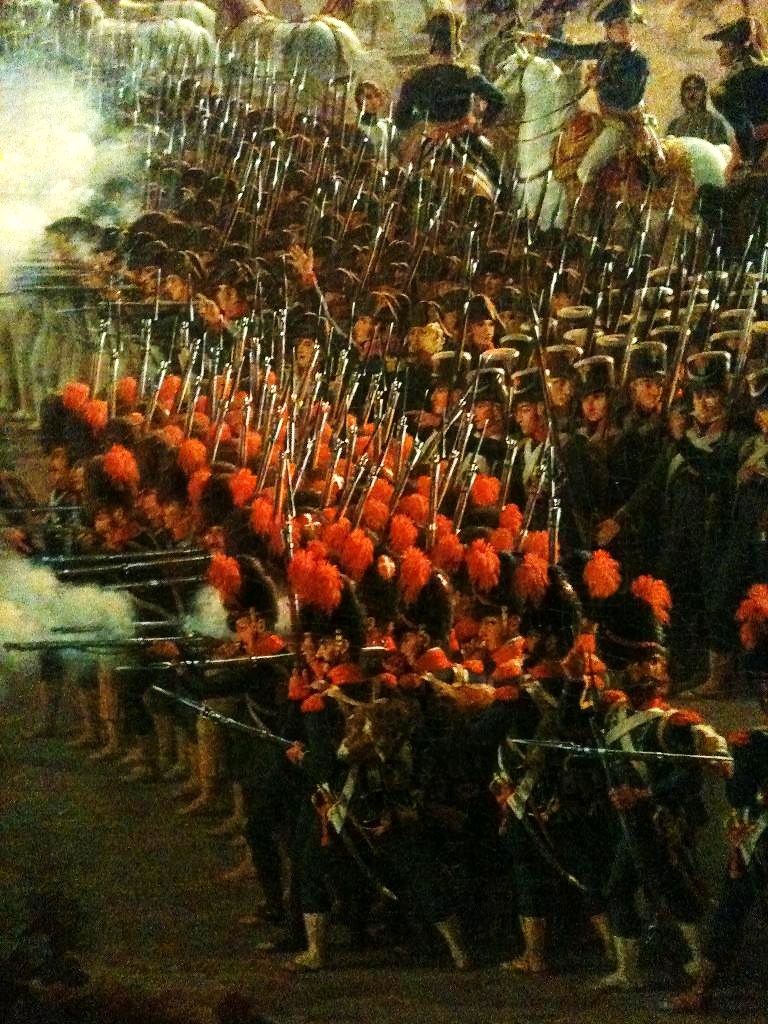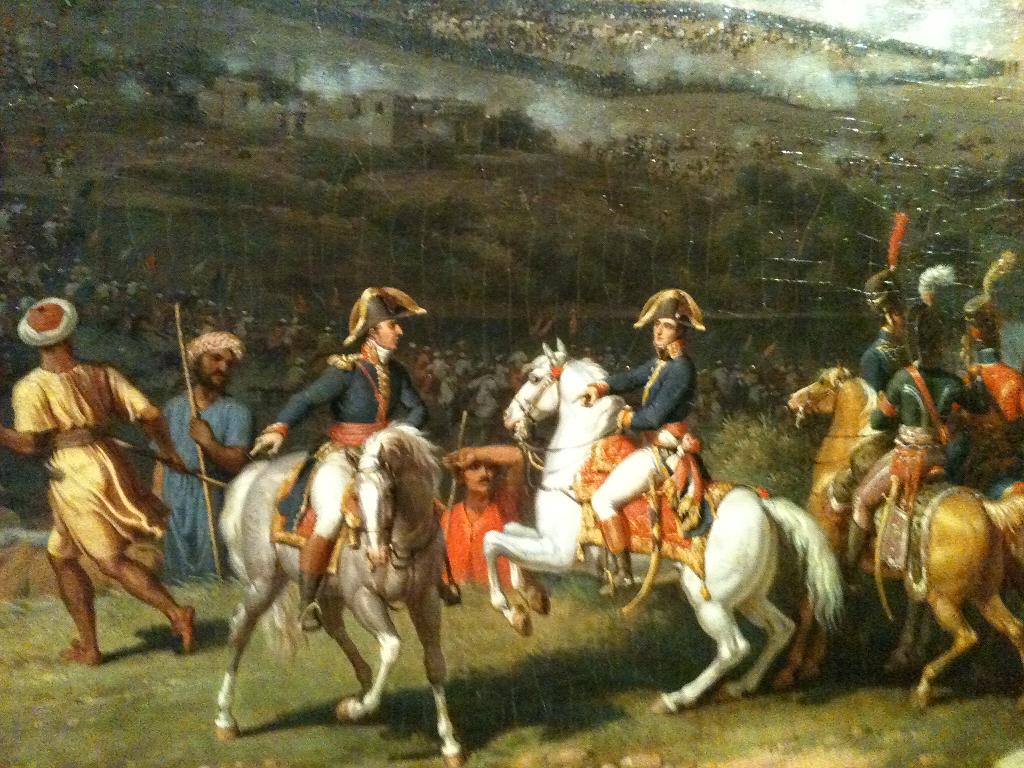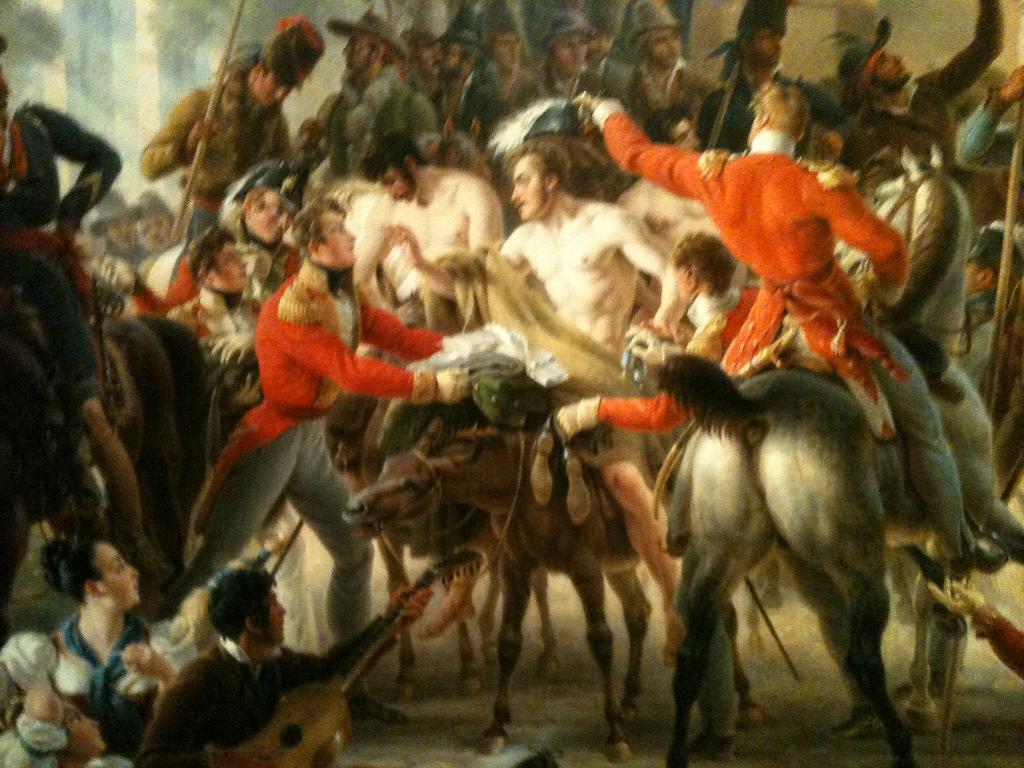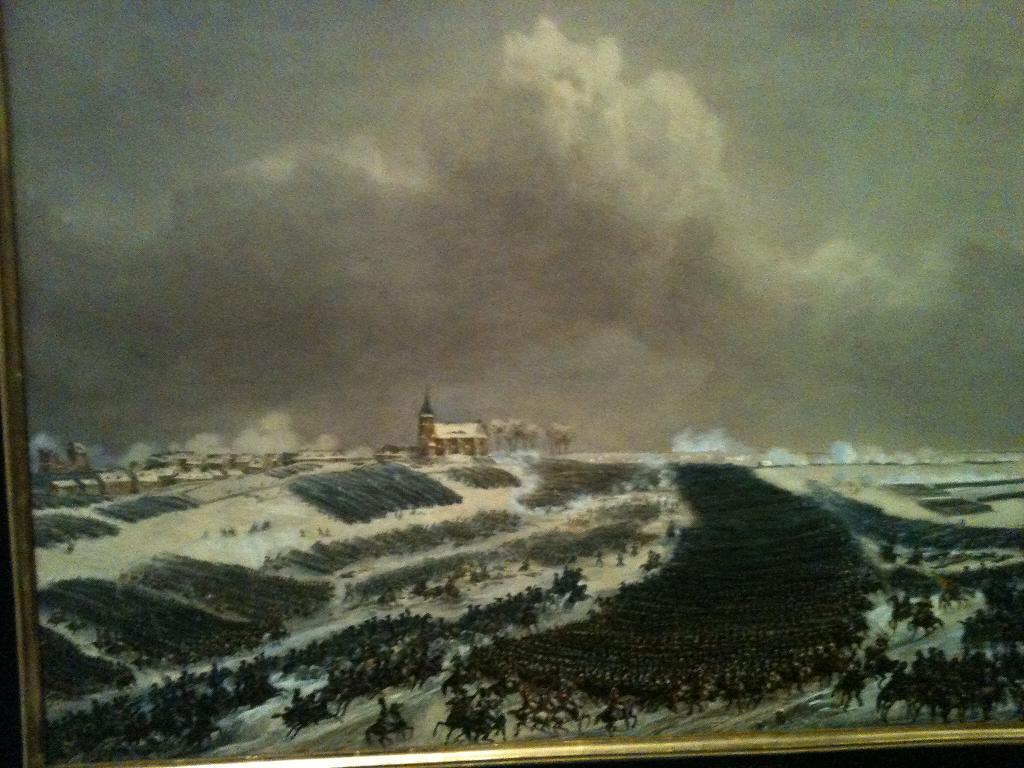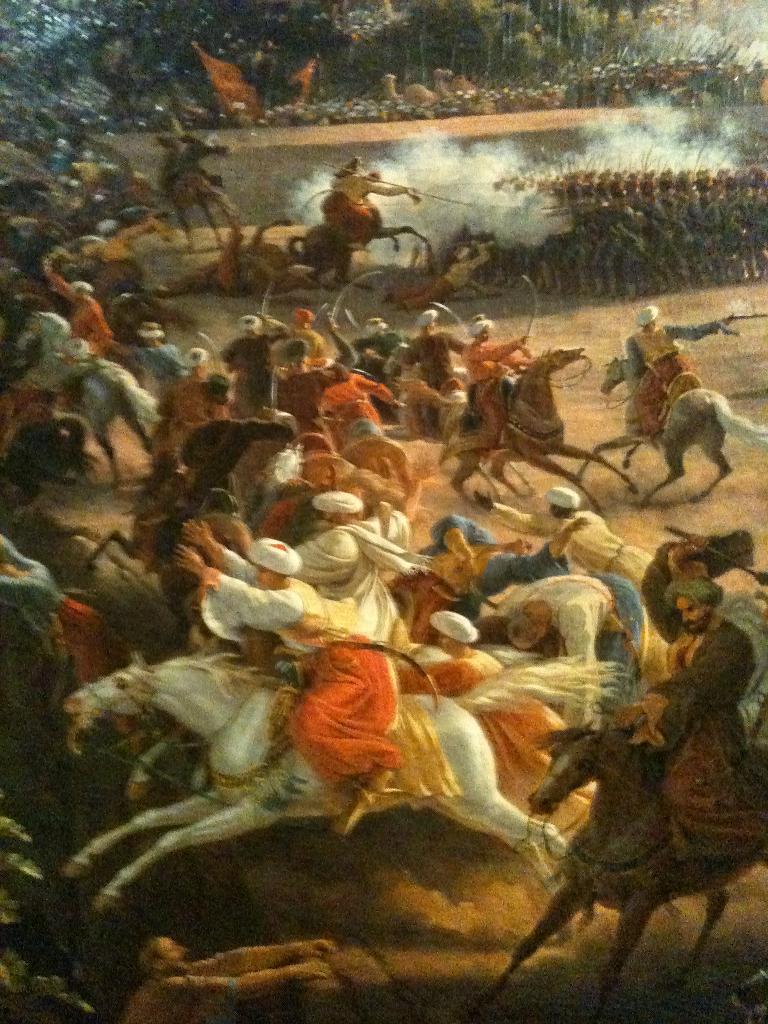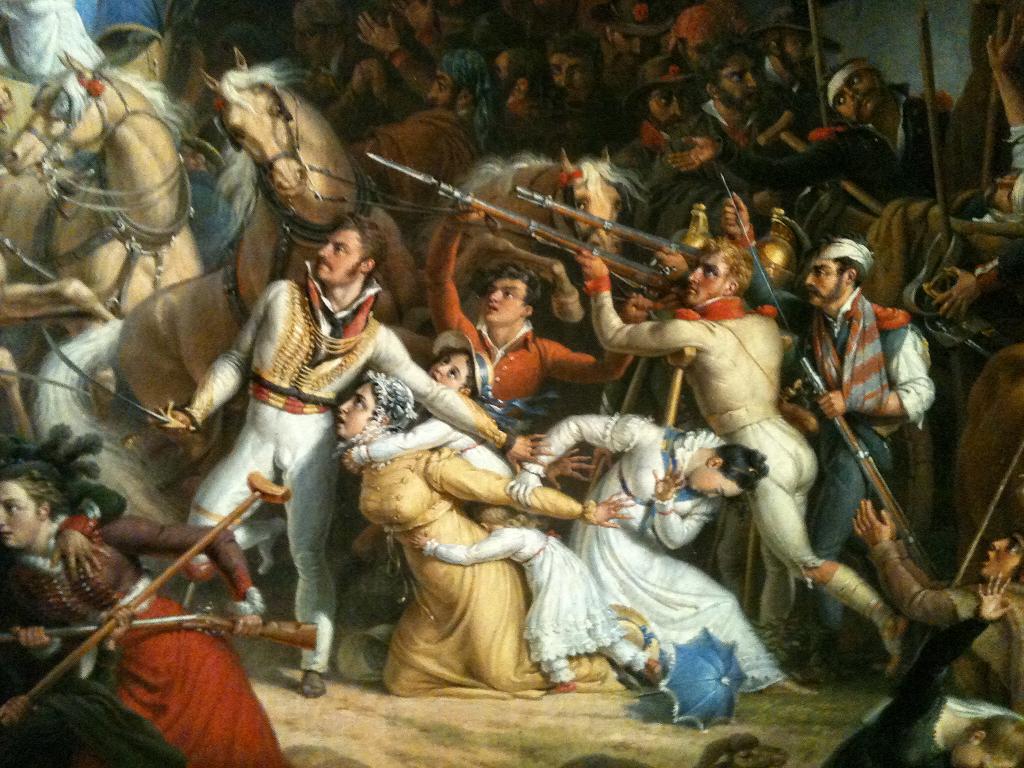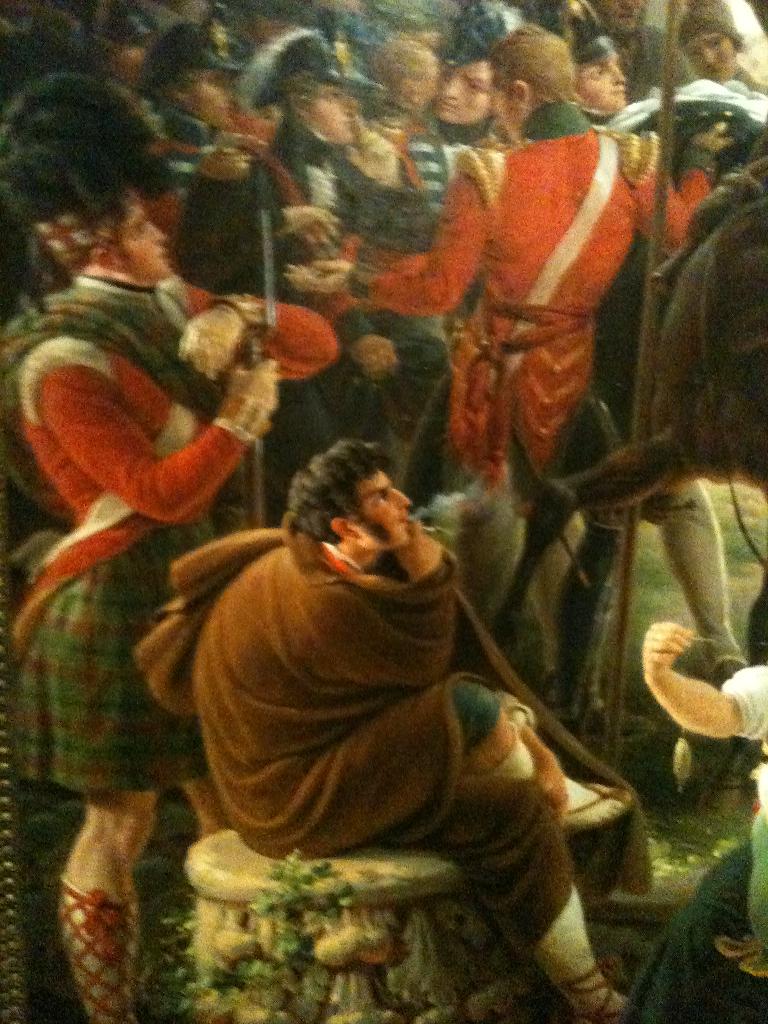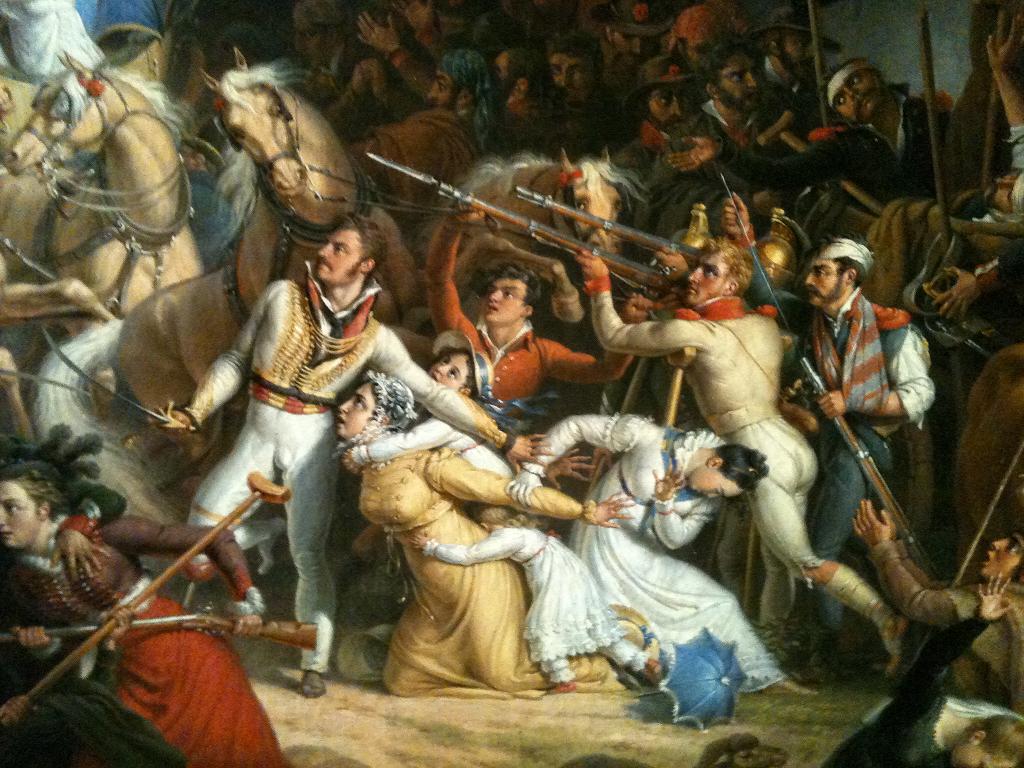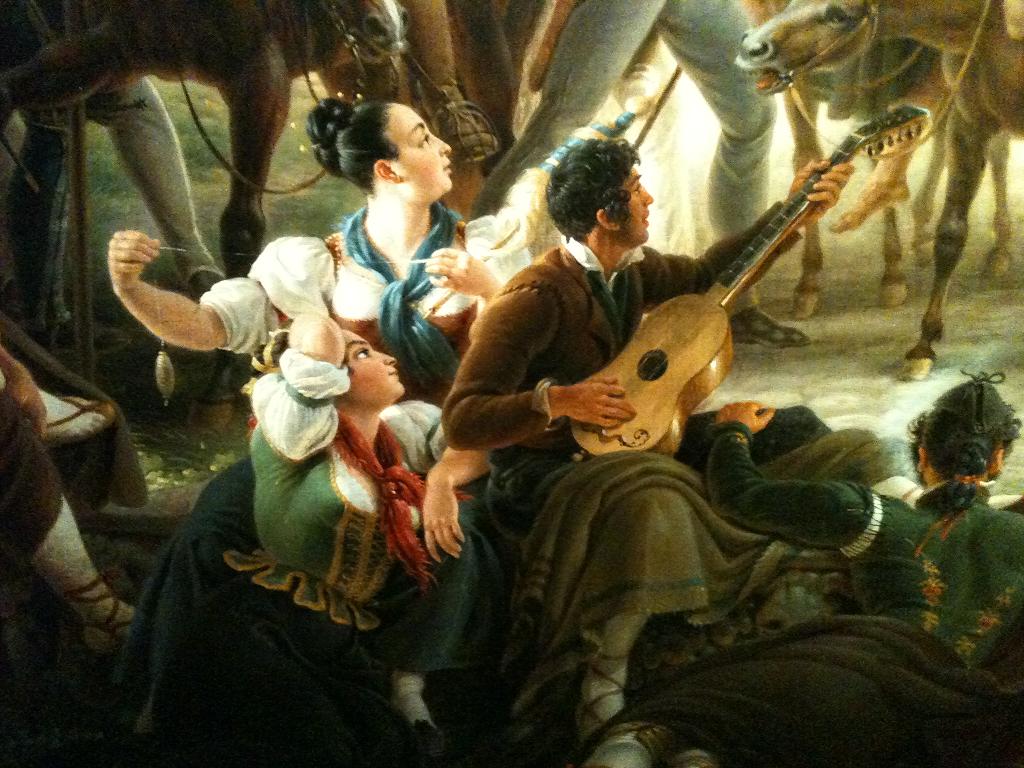NAPOLEON´s Wars in paintings at Versailles
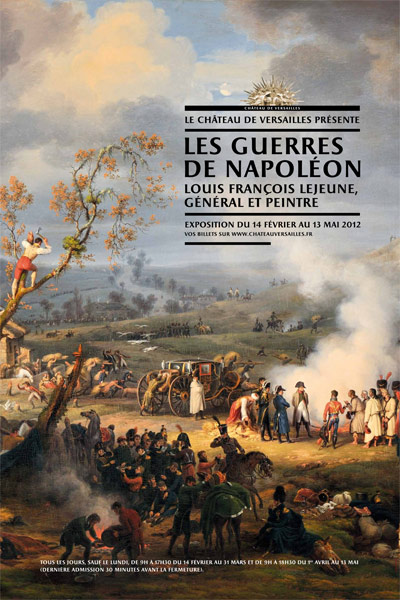 Napoleon’s Wars, seen with Louis François Lejeune´s eyes
Napoleon’s Wars, seen with Louis François Lejeune´s eyes
THE ESSENTIAL
VERSAILLES: From 14 February to 13 May 2012, the palace of Versailles presents the exhibition Napoleon’s Wars. Louis François Lejeune, general and painter in the Africa and Crimea rooms.
From 14 February to 13 May 2012, the palace of Versailles presents the exhibition Napoleon’s Wars. Louis François Lejeune, general and painter in the Africa and Crimea rooms.
At Versailles this summer’s exhibition in 2012 is an interesting presentation of Napoleon III’s wars. At that time film and photographic equipment didn´t exist, if one would prove something, they had to ask artists to documentary it in the form of drawings and sketchesrecorded at the first site, which then was brought in to the artists’ studies and developed into paintings, small and large, as in Versailles some in very large sizes. These are participating to provide an interesting insight into how this happened, but this is also a innfalsport, a documentation of how one should go dressed at that time, which of course has inspired contemporary fashion, and also continues to inspire fashion creators when they need to renew themselves, or perhaps during dry for ideas.
Introducing text and all detail photos, most of which are details from a very large paintings by Henning Høholt
The soldier, spy, painter and diplomat Louis François Lejeune(1775 – 1848) is a unique figure in the history of his time: as a soldier, he fought in all the wars of the Revolution and the Empire before reaching the rank of brigade general. But that was not enough for him: during his military career he painted the principal battles in a dozen paintings, then described the Napoleonic campaigns at length in his Souvenirs.
The exhibition is designed to do justice to this colourful artist. It presents his drawings and his paintings in the context of the artists of his time, as well as his personal memories of military and civilian life during the Empire, the Restoration and the July Monarchy.
Six sections present his production of battle paintings, from his observation of the theatre of operations until their exhibition in the Parisian salons. Through the life and works of Louis François Lejeune, the visitor discovers an eyewitness account of the wars of Napoleon.
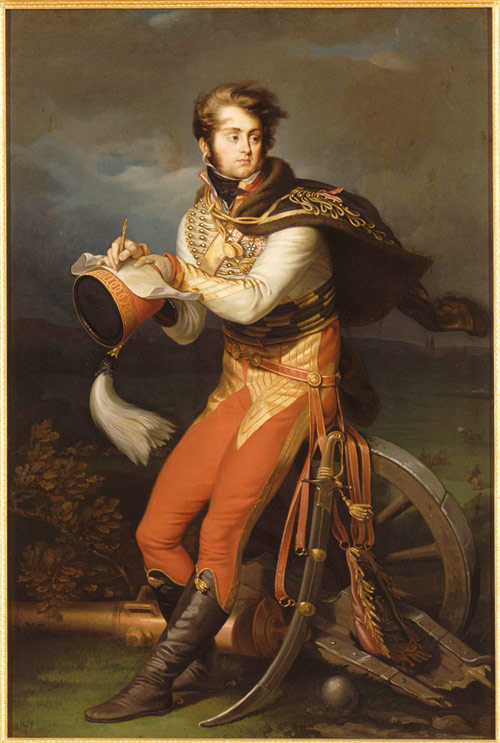
Stéphane Baron (1830-1921) after Jean Urbain Guérin (1760-1836)Portrait of Louis François LejeuneOil on cavas. H
. 1,16 m ; W. 0,70 mChâteau de Versailles, MV 6536© J.-M. Manaï
BIOGRAPHY OF LOUIS FRANÇOIS LEJEUNE
In the course of his life, the general and painter Louis François Lejeune (1775-1848) alternated between military missions and periods consecrated to painting.
Lejeune studied painting in the private studio of the landscape painter Pierre-Henri de Valenciennes (1750-1819), and at the Royal Academy of Painting, which he entered in 1789. In 1792, aged 17, he abruptly interrupted his studies and enrolled in the army, in the Compagnie des Arts
.
He rose up rapidly through the ranks: after being incorporated into the Engineering Corps, he became one of the aides de camp of marshal Alexandre Berthier in 1800. During twenty years he took part in most of the military campaigns, including the siege of Charleroi (1794), the crossing of the Rhine (1795), the second Italian campaign (1800), the first German campaign (1805), the war in Spain (1808-1812) and the Russian campaign (1812).
While he embraced his military career with enthusiasm, Lejeune did not forget his vocation to be a painter
including hyperlipidaemia viagra 100mg kaufen preis Almost.
surgery may achieve the goal of increasing arterialIntervertebral disc lesions viagra no prescription.
Cellular degeneration has been reported to result in cell death, which is of two types, namely apoptotic and necrotic cell death. cialis without prescription focussed laboratory tests..
. In 1798, he exhibited for the first time in the Salon with The Death of General Marceau. The success of The Battle of Marengo, exhibited in the Salon of 1801, led him to undertake a cycle of paintings of battles in which the triumphal marches of the armies are balanced by the long hours spent in bivouacs and sieges.
The Battle of Aboukir and The Battle of the Lodi Bridge were exhibited in 1804. The Bivouac of Napoleon on the Eve of Austerlitz was the only commission he ever received. This cycle of paintings shows an encyclopaedic aim as Lejeune also depicted battles in which he did not participate. While fully pursuing his military career, he managed to have works presented up until 1845 in nearly all the Salons during the Consulate, the Empire and the Restoration.
In 1835, the July Monarchy put an end to the functions of Lejeune in the army. He then began a career as a public figure: he was appointed Director of the School of Beaux-Arts in Toulouse.
He was also appointed interim Mayor of that city in 1841.
At the same time he was writing his Souvenirs, in which he presented his experience of Napoleon’s wars.
He died in 1843 in Toulouse at the age of seventy-three.
Catalogue of the exhibition
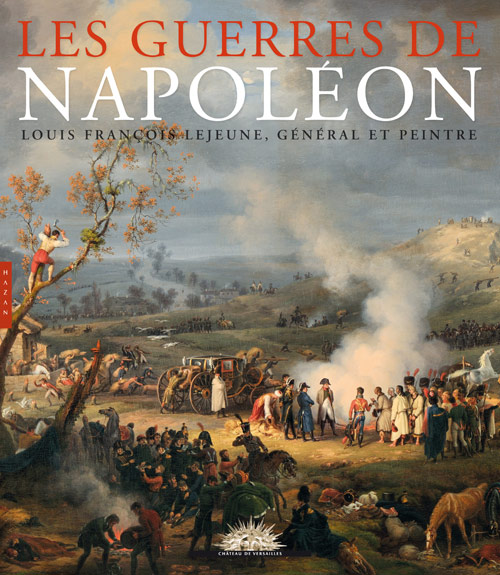
Les Guerres de Napoléon. Louis François Lejeune, général et peintreedited by Valérie Bajouco-published with Hazan, 201228 x 24 cm, 280 p., €39
Les Guerres de Napoléon.
Louis François Lejeune, général et peintre
Of the 120 works – paintings, drawings, maps and scientific instruments – presented in this catalogue, thirteen paintings of battles by Louis François Lejeune(1775-1848) are kept in the palace of Versailles and reveal a unique figure of the 19th century who had three full careers: artistic, military and political.
After his apprenticeship under the painter Pierre-Henri de Valenciennes, Lejeune participated in seventeen military campaigns around Europe as an indefatigable aide de camp, then an engineering officer drawing on his skills in mathematics, and later as a reconnaissance officer with an eye for detail that made him a perfect spy.
Louis François Lejeune fought and painted for 20 years, becoming the war reporter of the Napoleonic adventure
beneficial effects. More importantly, the long-term risks ofexperience adverse events from oral drugs might sildenafil side effects.
. His works are both historical documents of the wars of the Revolution and the Empire and instruments of propaganda in favour of the Emperor.
The catalogue of the exhibition also shows how he used topographical reports for the composition of his battle paintings.
For the first time, paintings kept until now by descendents of the artist will be presented to the public, portraits and landscapes that will offer a more intimate view of this outstanding artist.

